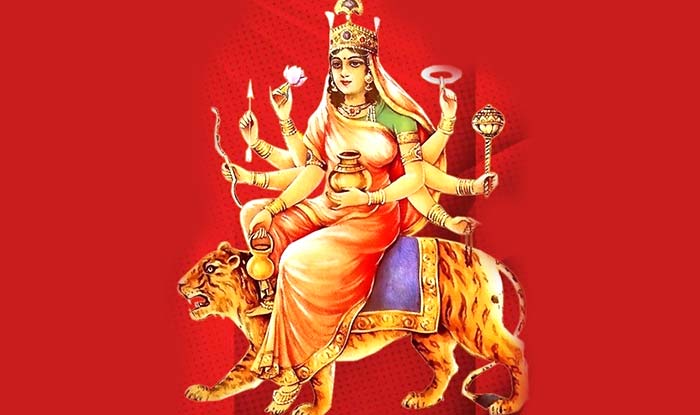BHUBANESWAR: Devotees worship Goddesss Durga in her many incarnations on each day of Navratri. The fourth day of is no different as Maa Kushmanda, the fourth incarnation of Goddess Durga, is worshipped on this day.
The Goddess is ruler of the Heart Chakra. She is also known as ‘the cosmic egg’ as she is believed to be creator of the universe along with Lord Vishnu. Legend has it that Maa Kushmanda smiled like a flower which blossomed from a bud and it helped Lord Vishnu to create the whole universe. As she created the universe, she is synonymous with Adiswarup and Adishakti.
She has eights hands and is also known as Ashtabhuja. She holds Kamandalu, bow, arrow, a jar of nectar (Amrit), discus, mace and a lotus. She also holds a rosary which blesses her devotees with the Ashtasiddhis and Navniddhis.
Maa Kushmanda represents Ananta Chakra in spiritual practice. The divine blessing of Maa Kushmanda fulfils one’s desires and brings his enemies in his favour. The Goddess brings light into darkness and establishes harmony in one’s life.
Orissa Post interacted with researcher Pandit Kedareswar Mishra to delve deeper into the subject. He said, “Maa Kusumanda is the divine vision of the whole creation. It’s her blessings and her energy that helps human to perceive his life goals. She is also the embodiment of wisdom. Hence, scriptures have given more importance to her worship. Without the grace of mother Kushmanda, living beings cannot perceive light. Also, it is not possible to obtain foresight without her grace. Devotees must perform the puja with a dedicated mind. It is said that the Devi resides on core of the Sun and hence controls the functioning of Surya Loka (Realm of Sun). Mata Kushmanda eliminates all sorrows from her devotee’s life and provides them with strength and good health.”
Esha Motwani, a Marwari homemaker residing in Patia, said, “The fourth day of the puja is special as we worship Maa Kushumanda, who is the creator of life. I offer water and a plate full of fruits to the goddess. In the evening, all Marwari women meet for a Katha Gatha, where scriptures of Maa Kusumanda are to be read aloud for others to listen. We sit in a circle like in Karwa Chaut. When the Katha concludes, we do aarati and distribute sweets and fruits among children. A special mehendi prepared at home is applied to all married woman of the colony and red chunri is offered to Mata Rani.”
Ashiwini Sriram, a student of ITER College, said, “At my home state of Karnataka, Navratri is known and celebrated as “Naada Habba”, where a traditional procession of Devi Maa is carried out on an elephant.”
The spirit of Navratri seems to be an all pervasive entity across India.
